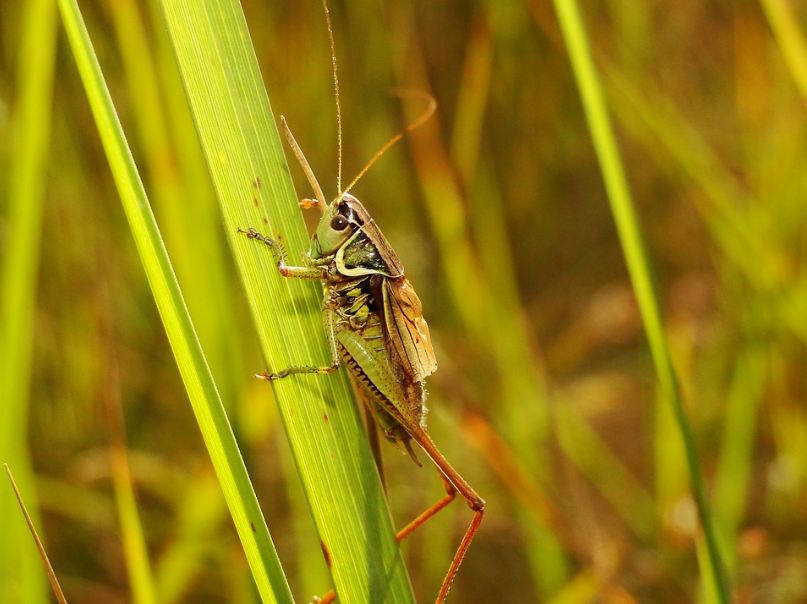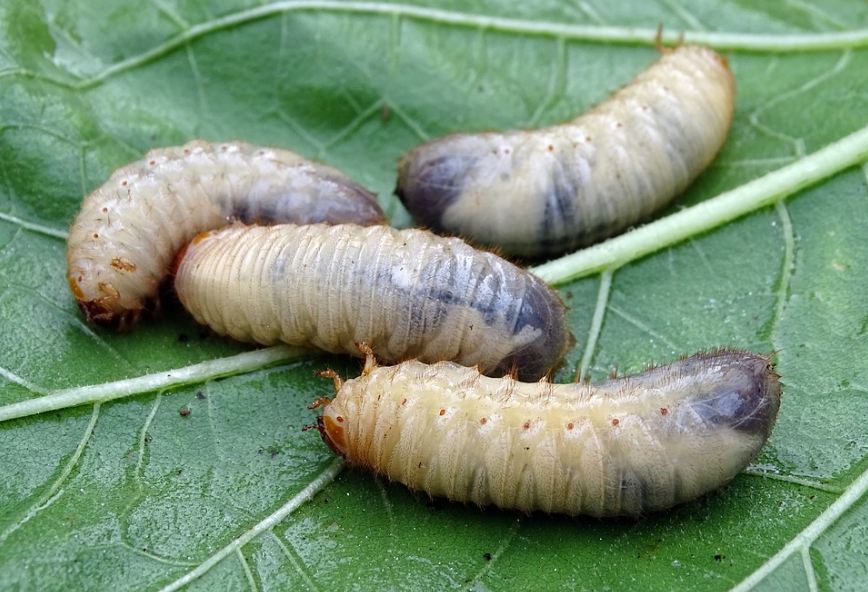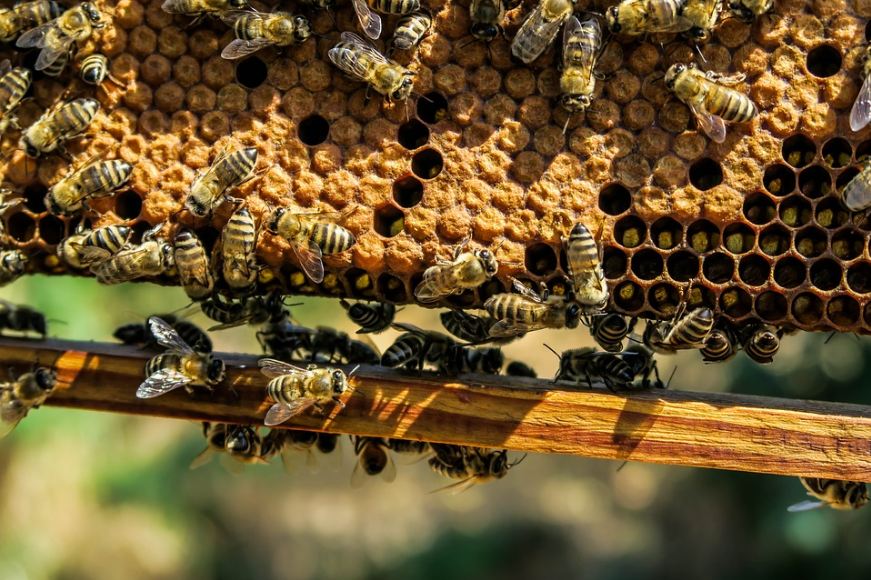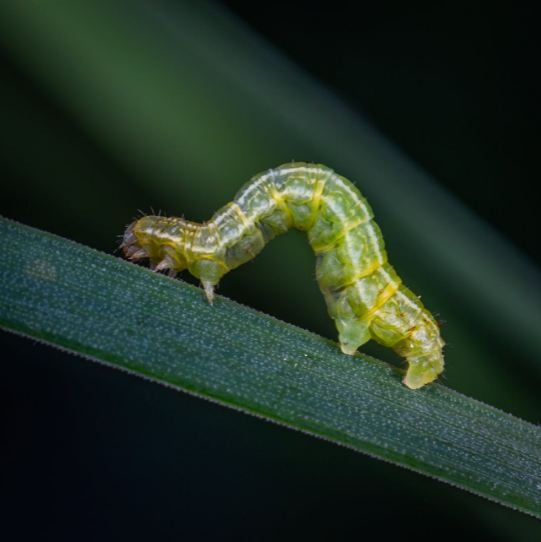It is soothing to beautify your lawn with bright flowers and home-grown fruits and veggies. Where gardening is a fun task to do, it is not a cup of tea. You have to watch out and beware of pests from the wind. Pests exist everywhere, especially after rain. And when your garden has been grown to be thick and emerald green, it is the most inviting place for pests.
Though difficult, it is not impossible to keep your lawn away from pests. As it is said that prevention is better than cure, you should apply this formula to keep your lawn pests free.
Identify Lawn Pests and Damage Caused By Them
The initial step to take care of your lawn and keep it away from pests is to know the victim closely and carefully. When you are familiar with the common pests and their life cycle, you will find it easy to attack and kill them.
Following are some signs to identify if your lawn has been the victim of pests:
- Brown spots on leaves will be evident
- Dead patches on grass
- Dried patches may be visible
- You may see bite marks of pests or insects on layers of turf or grass
- Missing roots or holes in the soil represent that the pests have invaded the land, and underground damage has been caused
Common Pests Causing Damage to Your Lawn
Your lawn may be commonly invaded by the following types of pests:
1. Beetle Larvae
This type of pest may cause wilted grass blades, brown turf patches, and ultimately the death of grass or leaves. If you see crows and skunks feeding in your lawn, they might be in a hunt of beetle larvae.
2. Chinch Bug
This bug is another common uninvited guest you may have in your green and grassy lawn. These are sap-sucking bugs found in several types of grasses. The damage is mostly seen between June and September. Chinch bugs leave a purple tinge, and irregular patches may be evident on the grass. You may misinterpret the reason to be the drought stress.
3. Sod Webworm
The adult moth seems to be a double snout. These bugs feed on grass blades and leave extensive dark brown patches. You may encounter tunnels at turf levels.
- Lawn Armyworm
You might have interpreted by their name that armyworms are fighters as they fight with your lawn. They commonly invade your garden in the spring and summer seasons. You can easily visualize these deadly creatures at night. Again, they feed on grass blades, especially in the evening, night, or early in the morning. After feeding, they leave round spots.
- Cutworms
These lawn culprits have different species. They are night invaders and destroy your lawn at night while you are sleeping. They attack hardest on shorter grasses.
How to Protect your Lawn from Pests
Often these minor damages go unseen, and they are neglected until larger destructions are caused. Thence, it is requisite to identify and treat these damages as well as to fight against these pests as early as possible. For this, a detailed and clear inspection is needed.
If you have a lawn, you should spare some time regularly for pampering your grass and plants; otherwise, all your hard work will go in vain. Luckily, there are many ways that you can adapt to get your lawn away from pests efficiently. Some of them are as follows:
1. Remove Clippings
Clippings are the materials that enhance soil fertility even more, and earthworms love fertile soil. You should be careful not to leave clippings after mowing; otherwise, your lawn is going to be the breakfast of these pests.
2. Don’t Forget to Aerate Regularly
Proper and regular aeration will help prevent drying of the soil, and drainage will be adequate and good. Some worms like Leatherjacket feed on poor draining soil and destroy it even more, so beware not to let your lawn be poorly drained.
3. Properly Maintain Your Lawn
Many bugs and worms can be avoided if you have your lawn nice and properly maintained. Regular feeding, aeration, weed, and moss removal are an important part of maintenance, so never miss any of these steps to keep these deadly guests away from your lawn.
Regular mowing will help moles to stay away and skin your lawn while on a walk. These simple smaller steps may help you for a long time.
4. Bees’ nest
Though bees are not pests, they still may leave long-lasting damages to your lawn. To avoid them, you can simply use bees’ nests on the lawn and divert them to some other direction without harming your place. Save your hard work and let your plants breathe openly.
5. Watch Out For The Changes That Your Lawn Is Experiencing
These bugs are smaller in size and cause damage to your lawn gradually. So, beware of the minor changes your lawn is undergoing by these tiny beasts. Protect your lawn at the earliest possible stage. Once the damage is large and devastating, it becomes difficult to return it. These bugs are devastating, especially in summers, so watch out during hotter months for the changes.
Some bugs may try to wander and destroy the lawn in the cool, springy season. They must be knocked out before trying to invade your special place.
6. Use Pest Sprays and Medicines
With the advancement of technology and modernization, different chemical agents have been introduced in the market to fight against your enemies. You can opt for those having minimal side effects on your grassy lawn and well-grown plants. There is a huge variety to choose from, and you should try the best one with maximum benefits against pest control.
What to Do If Your Lawn is invaded by Pests?
If your lawn is already invaded by pests and greater damage has been imposed on your land, you should be vigilant to immediately control and treat the damage.
1. Brush the Worms Away
If worms have formed the casts, you should brush them away without panicking. Just keeping your lawn clean will help to save a lot of problems. After wiping the worms, apply a sulfur-containing product that will increase the soil acidity without leaving any damage to worms. Worms don’t like acidic soil, and they will say goodbye to this acidic land to seek green and grassy areas.
2. Nematodes will Kill Leatherjackets and Other Worms
Nematodes are actually bacterial worms that kill other harmful bugs, which are not good for your lawn. They are not found naturally on your lawn, so you will have to add them to get rid of some harmful pests.
3. Swarm Collector for Bees
As already mentioned above, bees are not pests, but because they can be severely devastating to your land, you should treat them as soon as possible. You can use a swarm collector if you are thinking of relocating your bees’ collector.
4. Use Insect Killer Granules
If you are too tired to try out stuff and still these stubborn worms and bugs are not willing to leave your land, try some insect-killing granules for the purpose. These have been introduced by different companies, and you can go with any of your choices.
Conclusion
Since pest care is a prerequisite to keep your lawn clean and plants happy, you should be careful and keep it in check regularly. If you have a lawn at your home, try not to damage it by just being lazy and sitting on the couch. Get up early in the morning and pamper your plants to keep them healthy and safe from pests and diseases. To further protect your lawn from pesticides, you can also use a broadcast spreader to spread good quality fertilizer all over your lawn.
Plants are a source of goodness and health to the environment. Therefore, you should be gentle to your lawn.






